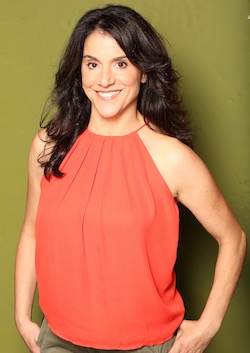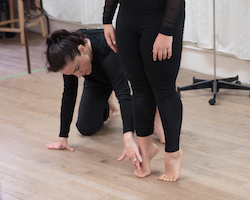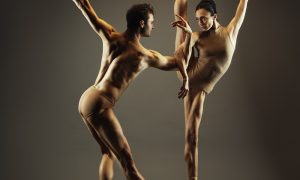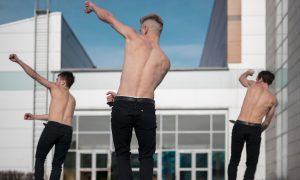Our body is wonderfully complex and multifaceted. Yet broken down into its simplest parts, it is a collection of bones, muscles, fascia and other types of tissue. A dancer’s instrument is literally their body. The better they know how it works, the better they can use it to its fullest potential. Ginger Cox, a New York City-based dance artist and educator, makes a clear and concerted effort to guide her students toward better knowing their instrument. Cox teaches at Pace University, Broadway Dance Center and is the creator of Dancing Anatomy Workshops. She holds an MS in Kinesiology, and is certified as a Corrective Exercise Specialist and Personal Trainer from the National Academy of Sports Medicine.

Cox wholeheartedly believes that studying anatomy (and kinesiology) in higher education, and all dance programs, encourages the growth of well-rounded dancers. One shift in perspective or significant realization from anatomical studies “can make a huge difference for a training dancer,” she adds.
Cox works toward leading students to these epiphanies experientially, through a few different avenues. As one, performing technical exercises with the eyes closed can offer key kinesthetic (body-based) information and can target proprioception (one’s sense of body, its position and movements in space). This allows students to really key into stability, balance and hone into their senses from the inside.
Although working with eyes closed has its advantages, Cox underscores the importance of observation, which can be a “feedback loop”‘ for obtaining information and implementing self-corrections. She also underscores the high value of questioning to discern where movement initiates, as well as to bring awareness toward which muscles groups are producing the actions or stabilizing the body. Cox teaches such anatomical concepts and facts in age-appropriate ways (even her youngest students are taught the names of bones and large muscle groups). She’s careful about the language she uses, and makes sure that it is useful and applicable. “Big words aren’t effective if students can’t relate them to their body,” she adds.
Cox varies up movement approaches and class content. She often “folds” this kind of learning into more conventional technique exercises. This approach allows students to more easily learn in their own time frame. It’s also less likely to intimidate them.
In a larger perspective, Cox wants to have us question some conventional dance vernacular that doesn’t align with our most updated anatomical knowledge. For instance, some of the anatomical metaphors we use in dance training have remained unchanged simply because that’s always how we’ve described things — which, she agrees, isn’t a very good reason to keep doing so. Finding stability in the ankle is an example; Cox explains how the instability there actually comes from movement in the feet.

Likewise, telling dancers to “pull up” might not be the most effective cue, because it often makes dancers only think of their abdominal muscles rather than their spine. “Lengthen your spine” is more accurate and teaches students about utilizing their core musculature. Cox contrasts tradition by starting exercises with left side of the body, using asymmetrical arm patterns, and creating sequences other than en croix (movement performed to the front, side and then the back). This helps dancers to change their expectations and habitual thought patterns, reorganize their technique and experience a keen physical response. Cox believes that habitual patterns can lead to a dominant side and can create muscular imbalances for dancers.
In general, she emphasizes core stability and connection on every plane in her teaching. She leads awareness and strength-building exercises that can even be said to be fun, such as playing “patty cake” with a partner while holding a plank.
For dance teachers interested in further educating their students in dance-related anatomy, Cox recommends anatomy apps and evidence-based journal articles from dance science organizations (such as IADMS). She’d also advise them to incorporate other training modalities (such as yoga), utilize athletic components and, if possible, use a skeleton to show bones in motion. She sees and teaches dance anatomy as science, artistry and creativity. It is important for the dancers’ longevity, injury prevention and optimizing their physical possibilities in adding utmost value to their aesthetics, Cox believes. It’s clear that she’s doing her part to share this important knowledge to keep dancers moving safely, for longer and at their best.
By Kathryn Boland of Dance Informa.















